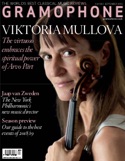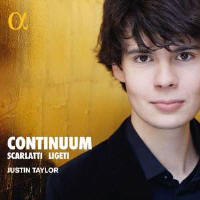Texte paru dans: / Appeared in: |
|
|
Outil de traduction (Très approximatif) |
|
|
Reviewer:
Lindsay Kemp Like David Greilsammer’s inspired piano pairing of Scarlatti and Cage (Sony, 6/14), this disc from rising French harpsichordist Justin Taylor finds a perfect partner for the quirky Italian, this time in the three similarly oddball pieces contributed to the harpsichord repertoire by György Ligeti. Both recitals achieve the feat of bringing the 18th- and 20th-century worlds together without detriment to either, so that it really does begin to be difficult to separate one from the other, such is the epoch-defying individuality of the composers involved. The Scarlatti sonatas are almost all relatively familiar ones – they include the chord-crushes of Kk175, machine-gun repeated notes of Kk141, swinging handcrossings of Kk27, tender complaints of Kk481 and delicate cantabiles of Kk32 and Kk208 – but Taylor ensures that they sound fresh. With a technique both neat and quick, he spins the music in smoothly contoured paragraphs, adding tightly curling ornamentation here and there but without hindering the music’s natural flow and rolling energy – the only exception being a slightly ponderous Kk208. It results in an expertly paced Kk213 and absorbing performances of Kk115, Kk175 and Kk18, the last of which has the coursing momentum of a speeded-up film of cloud movement. With Scarlatti-playing like this it’s hard to see how you might want for more. But then, there’s Ligeti. The Hungarian put Scarlatti alongside Chopin, Schumann and Debussy in his personal keyboard pantheon, and it is not hard to see his influence in the elegantly roaming righthand lines of the Passacaglia ungherese, the driving dance-beat of Hungarian Rock or the repeated notes, like a crazy Kk141 or Kk519, of the extraordinary, mesmeric Continuum. Overall, one has to admire the natural freedom of Taylor’s playing in both composers and wonder if their juxtaposition has produced cross-fertilisations of interpretation. Would he have dared to syncopate the right-hand repeated notes of Kk492 without Hungarian Rock in his mind? Or trod so suavely through the Passacaglia without Scarlatti’s example? Who knows? But, whatever the case, this disc is an exhilarating vindication of the harpsichord as a solo instrument for music old and new. |
|




